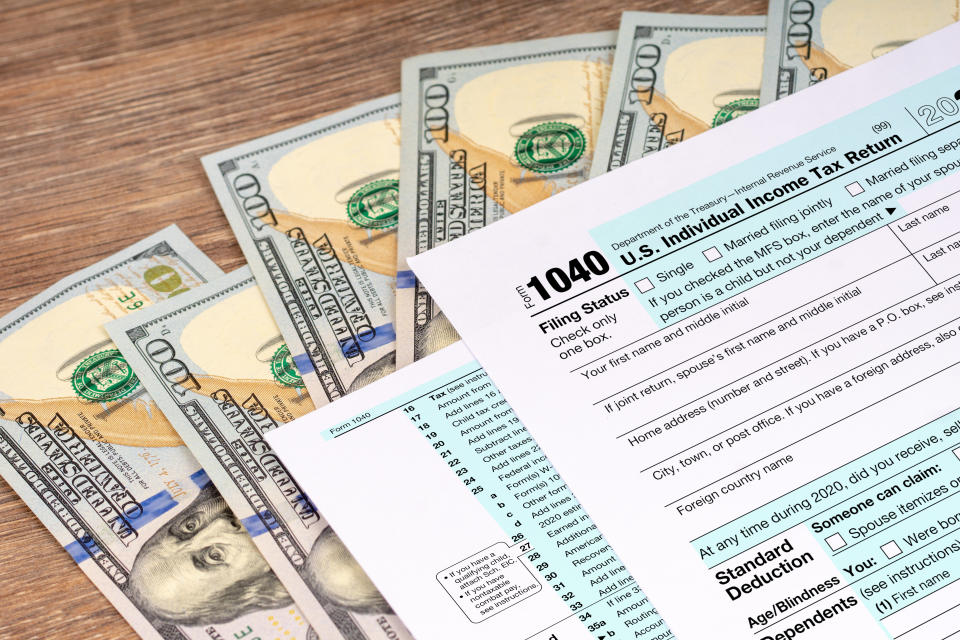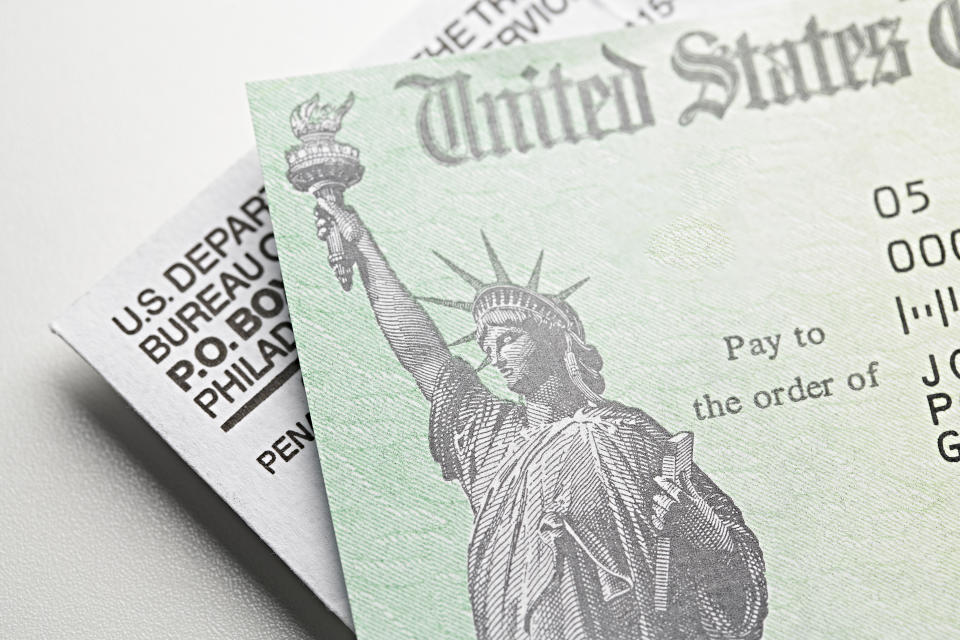Tax season is upon us and there are some key changes in 2022 — including this year’s deadline — but most largely stem from pandemic-era tax legislation.
“The pandemic significantly shifted the tax landscape as billions of dollars in aid were processed by tax returns,” Kathy Pickering, the chief tax officer at The Tax Institute at H&R Block, recently said in a webinar hosted by the National Consumers League (NCL). “For many Americans…the tax return is the most significant financial transaction of the year. The past two years reinforced this point as millions of families relied on their tax return to tap into critical government relief.”
This year, tax season starts January 24 with the deadline on April 18, instead of the typical April 15. For Maine and Massachusetts residents, the tax deadline is April 19 due to Patriots’ Day, a holiday in both states.
Sponsored by H&R Block’s Tax Institute, the NCL webinar outlined what you need to know this year as “we head into another tax season that is quite different from the norm,” Garrett Watson, senior policy analyst at the Tax Foundation, said.

Taxpayers need to reconcile the Child Tax Credit (CTC)
Many Americans received advance payments for the Child Tax Credit. Under the American Rescue Plan enacted in March 2021, the credit amount was increased and eligibility was expanded so families with little to no income could qualify. Additionally, the legislation allowed half of the credit to be disbursed in advance in monthly payments from July to December last year. The other half is distributed as part of your tax refund.
To get the correct remaining amount, taxpayers must use a new tax document this filing season, IRS Letter 6419, to reconcile the amount they received in advance from the Child Tax Credit, according to Manuel Dominguez, a senior tax research analyst at H&R Block.
As previously reported by Yahoo, taxpayers whose refund is solely based on this credit may see a smaller tax refund this year. If you didn’t receive IRS Letter 6419, you can get it on the IRS Child Tax Credit Update Portal. You will need this document to file this year.
Know if you owe the IRS for excess CTC payments
Advanced child tax credits were based on 2020 tax returns, so divorced or unmarried parents who alternate claiming dependents may have received an excess in advance CTC payments if they aren’t claiming the child this year, according to Dominguez.
The Safe Harbor Repayment Protection provision provides protection from paying back that excess amount for lower earners. The income thresholds are $40,000 for single filers, $50,000 for heads of household, and $60,000 for joint filers.
If your income exceeds these thresholds for your filing status, you may need to pay it back. Consult with your tax professional to determine what to do.
The child and dependent care credit is fully refundable

There are two big changes to this credit. First, the amount of allowable credit has increased substantially. In the past, taxpayers were capped up to $3,000 for child care expenses for one dependent and up to $6,000 for two dependents. For this year, the amount is $8,000 for one dependent child and $16,000 for two dependents. It also includes out-of-pocket expenses for child care, day camps, or any type of dependent care.
The second big change is the credit is fully refundable as long as taxpayers meet certain requirements. This means taxpayers can get the full credit amount even if they don’t pay any taxes.
“Taxpayers who had lower- to moderate-income and…no tax liability when they filed their tax return…never saw any benefit of this credit,” Dominguez said. “But this year now that the credit is fully refundable, they can get the benefit of it.”
The Earned Income Tax Credit (EITC) threshold increased
There are three big changes for the Earned Income Tax Credit (EITC) that taxpayers should know.
The income threshold has been increased for single filers with no children: “If you filed last year and your income was just above the limit to claim this credit, know that the income threshold has increased,” Dominguez said, “and you may now be eligible for this credit this year.“
Married taxpayers filing separately can qualify: You can claim the EITC as a married filing separately if you meet other qualifications. In previous years, this wasn’t available for those taxpayers.
The lookback election can help you qualify: “If your income in 2019 is higher than your income in 2021, [the lookback election] …using that 2019 income allows you to claim a higher earned income tax credit,” Dominguez said.
If you received a third stimulus check in 2021, you need to reconcile it
If you received a third economic impact payment (EIP) — stimulus payment — the IRS is mailing Letter 6475, which should be received by mid-February. You will need this document to reconcile the third stimulus payment on your tax return.
The document will show your personal information — your name and address — and the amount you received as your 2021 EIP. Using the letter to correctly fill out your taxes will help ensure your taxes and refund will be promptly processed.
“Some folks are still…worried that they may have to repay some of these payments, [but] there are…robust safeguards against that for the stimulus payments,” according to Watson.
You may now be eligible for a stimulus payment
There are several reasons you may now qualify for the third stimulus payment. To receive that amount, you must claim the Recovery Rebate Credit on your tax return.
“Taxpayers …whose income was higher in 2020 and did not qualify for the full stimulus payment, did not receive the full stimulus payment, but now that they’re filing…taxes for 2021, if their income has lowered… they may qualify for an additional stimulus payment in the form of the recovery rebate credit,” Dominguez said.
If you had a new child in 2021 (birth, adoption, or fostered), you may also be eligible for the Recovery Rebate Credit. Also, first time filers may not have received the credit.
Remote workers might face double taxation on state taxes

Because of the pandemic, many employees worked remotely. Some employees moved out of state causing state tax filing implications if your employer is outside the state where you worked remotely. Last year, some states had temporary relief provisions to avoid double taxation of income, but many of those provisions have expired.
“If your employer is in one state and you live in another state as a remote worker, there are six states that have ‘special convenience of employer’ rule to avoid double taxation,” Watson said. “Those states are Connecticut, Delaware, Nebraska, New Jersey, New York, and Pennsylvania.”
If you don’t live in those six states, consult with your tax professional to see if there are other ways for you to mitigate the double taxation.
Increased deduction for cash charitable contributions
This year, if you gave cash to a charity, you can get take the standard deduction and still deduct up to $300 for single filers and up to $600 for joint filers. Last year, that threshold was $300 for both single and joint filers who took the standard deduction, and before that, only taxpayers who itemize their taxes could deduct charitable contributions.
Refunds may fluctuate up or down based on the Child Tax Credit changes

“We have to reconcile those advanced [child tax credit] payments, so that’s going to lower the child tax credit that you’re claiming on your tax return, [but] the child dependent care credit…can substantially increase it,” Dominguez said.
Again, if your refund is solely based on the CTC, you may likely see a smaller tax refund. However, if you’re eligible for other tax credits, you might not see a decrease in your refund.
To avoid refund delays, e-file and file early
”When you e-file your return…that’s a much quicker process than…paper filing [that] is gonna get caught in that backlog somewhere [and] if you do a refund use direct deposit… that just reduces the time,” Dominguez said.
File accurate returns to avoid delays in processing. If you enter an incorrect amount for your stimulus check or CTC advance payments, it can delay your processing. Have paperwork like IRS Letters 6419 and 6475 ready to reconcile your Child Tax Credit and stimulus checks. Additionally, taxpayers should electronically file and use direct deposit for refunds to prevent delays.
If you owe this year, you don’t have to make a payment until April 18. That’s where filing early helps you plan. If you cannot afford a tax professional, Volunteer Income Tax Assistance (VITA) offers free tax preparation for moderate- to low-income individuals, disabled, senior citizens, or those who have a language barrier.
“VITA is a 50 year-old federally funded program [and] volunteers are all IRS certified…[with] a lot of experience with things like tax credits, [and] are focused on the low income tax filer,” Ain said. Due to the pandemic, VITA is “doing in-person meetings with clients, drop-offs, and virtual meetings depending on the location. If you’re looking for a VITA practitioner or other options, [check] the IRS free file options.”
Ronda is a personal finance senior reporter for Yahoo Money and attorney with experience in law, insurance, education, and government. Follow her on Twitter @writesronda
Read the latest personal finance trends and news from Yahoo Money.
Follow Yahoo Finance on Twitter, Instagram, YouTube, Facebook, Flipboard, and LinkedIn
Source: finance.yahoo.com

